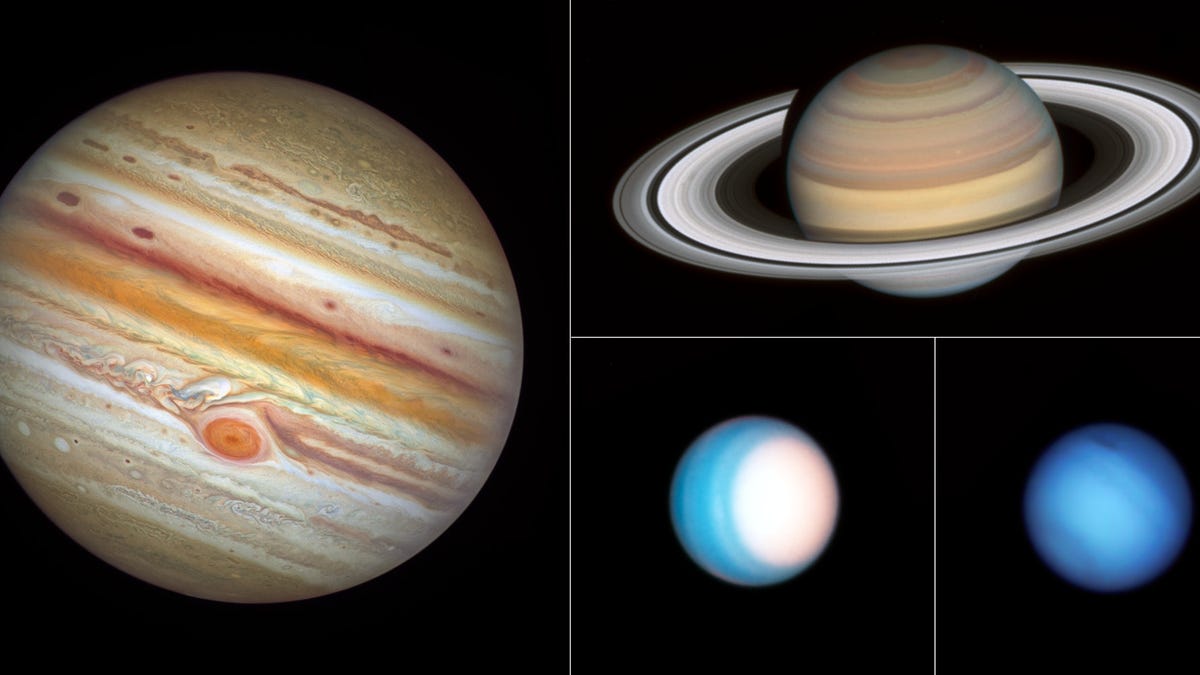NASA's Hubble Space Telescope delivers epic new views of gas giant planets
Dazzling glamour shots for Jupiter, Saturn, Uranus and Neptune from the workhorse scope.
Our solar system sure has some pretty planets. On Thursday, NASA and the European Space Agency released fresh looks at Jupiter, Saturn, Uranus and Neptune as seen by the Hubble Space Telescope.
All four of the planets are gas giants, making them very unlike Earth or Mars, which are rocky. As NASA poetically said in a statement on the Hubble images, "Stretching from 500 million to 3 billion miles from the sun, these monsters are as remote as they are mysterious, dwelling so far from the sun that water instantly freezes to solid ice."
Hubble, a joint project of NASA and ESA, annually monitors the outer planets so scientists can track weather and atmospheric changes over time. The images are part of the Outer Planets Atmospheres Legacy program (OPAL) and were taken in September and October.
On Jupiter on Sept. 4, the telescope noticed new storms. "Every time we get new data down, the image quality and detail in the cloud features always blow me away," said Amy Simon of the Goddard Space Flight Center.
A Sept. 7 view of Saturn revealed color shifts connected to seasonal changes. Hubble's sharp eye lets researchers dial in which bands of the stripy planet are changing colors.
Uranus is sporting a bright white polar region in Hubble's Oct. 25 image. "Researchers are studying how the brightening polar hood results from changes in the concentration of atmospheric methane gas and the characteristics of haze particles, as well as the atmospheric flow patterns," NASA said.
Neptune looks like a blue marble in the telescope's Sept. 7 view. It's rocking some intriguing dark spots, one of which has been moving around. NASA said the planet is looking very much like it did back in 1989 when the Voyager 2 mission took a look.
Hubble has spent more than three decades unveiling the secrets of space. The telescope's team is currently working through a technical glitch, but one of its main science instruments is up and running during the troubleshooting. If all goes well, we can expect Hubble to deliver another round of planetary portraits in 2022.


